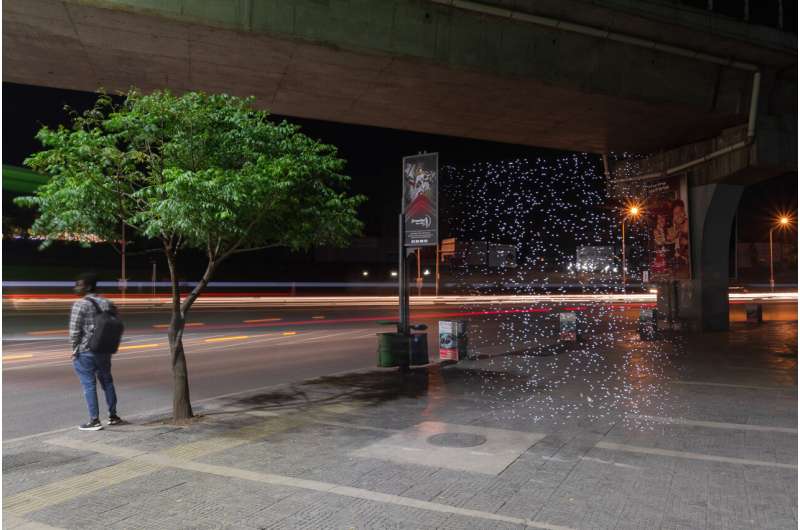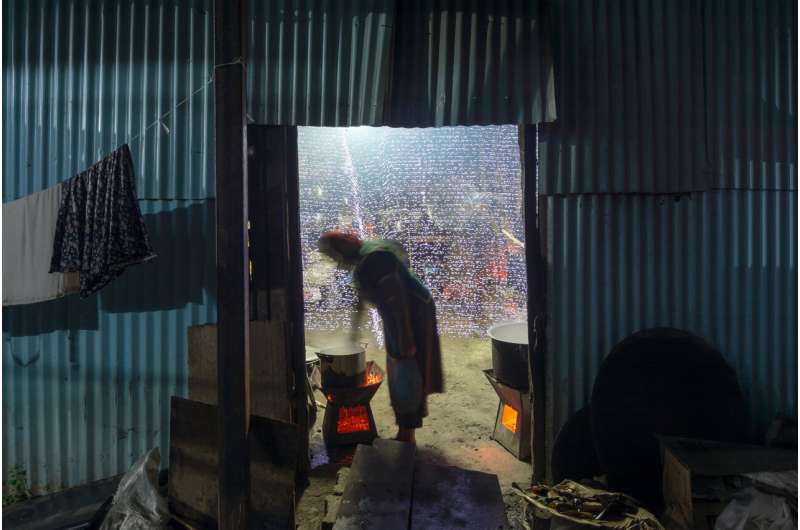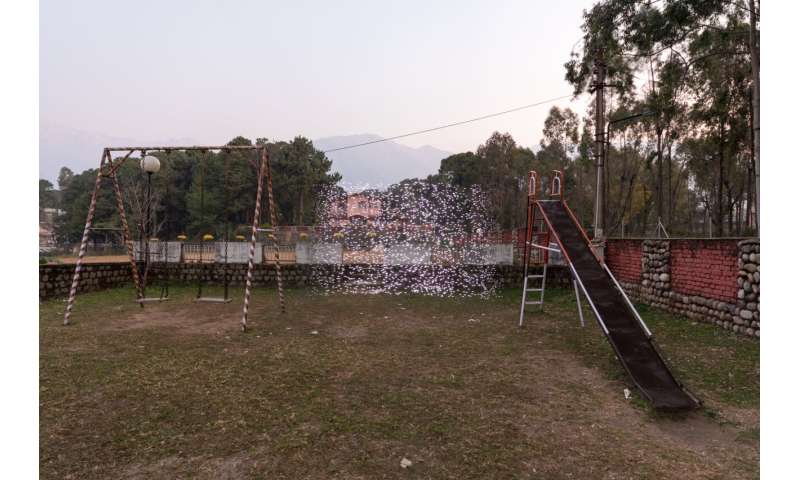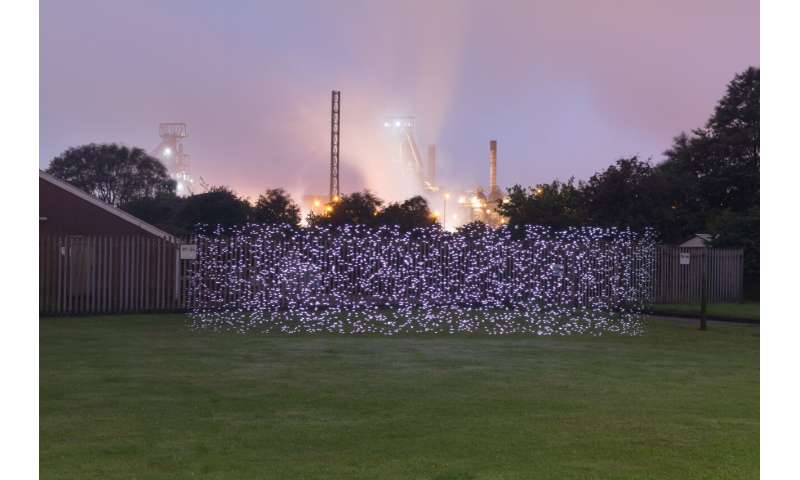This article has been reviewed according to Science X's editorial process and policies. Editors have highlighted the following attributes while ensuring the content's credibility:
fact-checked
peer-reviewed publication
trusted source
proofread
'Painting with light' illuminates photo evidence of air pollution

Researchers and artists have joined forces to "paint with light"—making invisible air pollution visible and demonstrating the health risks posed to people living and working in Ethiopia, India, and the UK.
Combining digital light painting and low-cost air pollution sensors, the team produced photographic evidence of pollution levels in cities across the three countries—sparking debate among local communities and illustrating:
- Air pollution varying dramatically between locations in Ethiopia—a kitchen using biomass stoves for food preparation where PM2.5 concentrations in the room were up to 20 times greater than what was measured nearby outdoors;
- Two children's playgrounds in India, 500 km apart—one in urban Delhi, the other in rural Palampur—with PM2.5 values at the Palampur playground at least 12.5 times less than those measured in Delhi; and
- Large variations in air pollution around the Port Talbot steelworks, in Wales—air quality monitoring and light painting at dusk in summer measured PM2.5 concentrations in the range of 30-40 mg/m3, when the hourly average value was 24 mg/m3.
The international team of researchers and artists published its findings in Communications Earth & Environment—recording how photographs taken as part of the "Air of the Anthropocene" project had stimulated discussion around the impact of air pollution.
The project was created by artist Robin Price and University of Birmingham environmental scientist Professor Francis Pope.
Professor Pope commented, "Air pollution is the leading global environmental risk factor. By painting with light to create impactful images, we provide people with an easy-to-understand way of comparing air pollution in different contexts—making something that was largely invisible visible."

The team used low-cost air pollution sensors to measure PM mass concentrations and took the sensors' real time signal to control a moving LED array programmed to flash more rapidly as PM concentration increased.
Photographer Robin Price commented, "By providing a visual understanding of air pollution that is accessible to people who don't necessarily have a scientific background, the light painting approach can demonstrate that managing air pollution levels can have a significant impact on people's day-to-day lives."
A long exposure photograph is taken with the artist moving the LED array in front of the camera—the flash becoming a dot on the photograph. The artist is not seen in the photo because they are moving, but light flashes from LEDs are seen because they are bright. The more light dots appear in the photographs, the higher the PM concentration.
"Air of the Anthropocene creates spaces and places for discussion about air pollution, using art as a proxy to communicate and create dialogues about the issues associated with air pollution," added Professor Pope.
Co-author Carlo Luiu from the University of Birmingham commented, "Thanks to the power of images, we can provoke people's emotions—fostering awareness and prompting people to share their perspectives and take action to tackle air pollution."
The Air of the Anthropocene project has been exhibited at gallery shows in Los Angeles, Belfast, and Birmingham. The project has also been used to raise air pollution awareness by UN International Organization for Migration (IOM), the Foreign, Commonwealth, and Development Office (FCDO) and UN-Habitat, which commissioned four pollution light paintings and texts to be displayed in Kampala, Uganda.
-

Playground at the Institute of Himalayan Biotechnology, Palampur, India PM2.5 30 - 40 micrograms per cubic meter. Credit: Robin Price -

Prince Street air quality monitoring site, Port Talbot, Wales PM2.5 30-40 micrograms per cubic meter. Credit: Robin Price
Air pollution is considered one of the main threats to both the environment and human health, and a leading cause of death globally. The World Health Organization (WHO) estimates that 99% of the global population breathes polluted air, causing approximately 7 million premature deaths worldwide each year.
The situation is particularly challenging in Asia, where air pollution remains a major problem in countries like India and China, despite several air quality policies and actions. African countries have experienced significant deterioration in air quality over the last five decades.
Particulate matter (PM) is the air pollutant most responsible for human morbidity and mortality. It has multiple impacts upon physical health and is responsible for diseases including heart disease, stroke, and cancers.
More information: Light painting photography makes particulate matter air pollution visible, Communications Earth & Environment (2024). doi.org/10.1038/s43247-024-01409-4
Journal information: Nature Communications Earth & Environment , Communications Earth & Environment
Provided by University of Birmingham



















